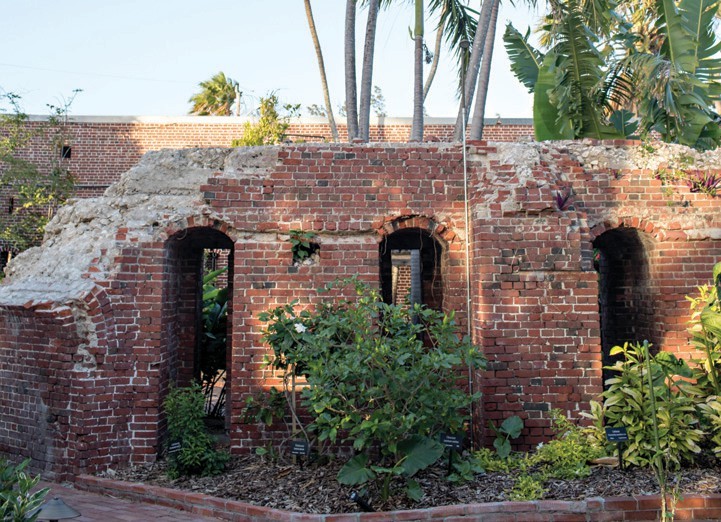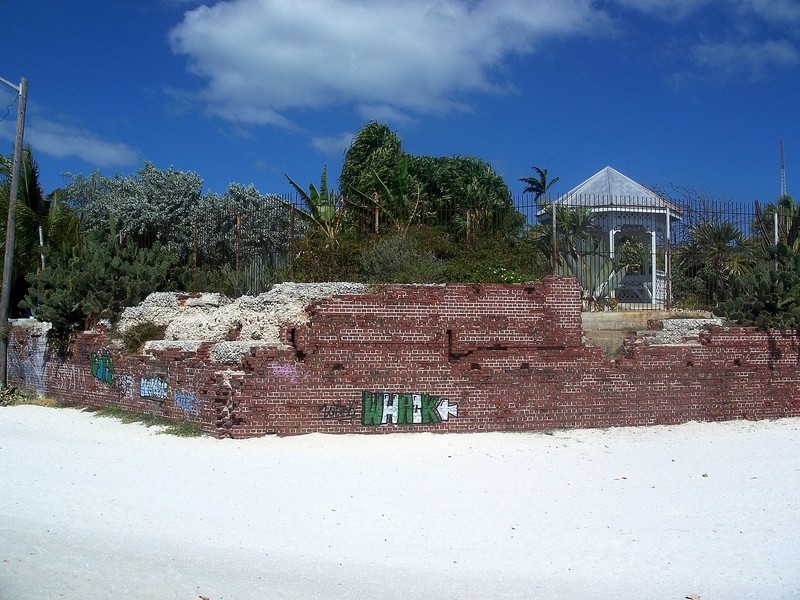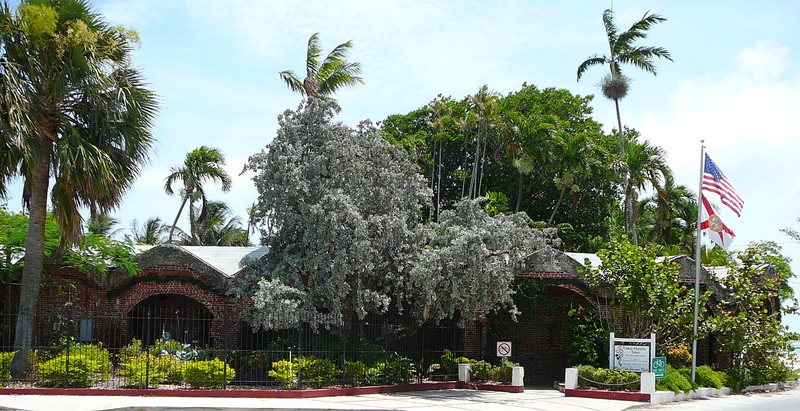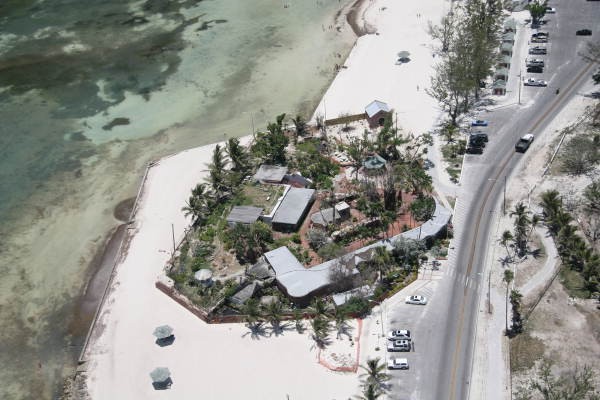West Martello Tower (Key West Garden Club)
Introduction
Text-to-speech Audio
Images
West Martello Tower

West Martello Tower


West Martello Tower aerial view

Backstory and Context
Text-to-speech Audio
The West Martello Tower stands one of two defensive works -- an East and West Tower -- constructed on the south shore of Key West during the Civil War to provide extra protection to the island and nearby Fort Zachary Taylor. Yellow fever outbreaks and supply difficulties prevented the full plans for the Tower to be constructed. Also, the remains of the West Martello Tower underwent alterations during the Spanish-American War. Regardless of the modifications, the Martello Towers demonstrate how the military deemed it necessary to protect Key West from forces approaching its beaches, notably because it remained a Union stronghold during the Civil War.
Captain George Dutton, of the Army Corps of Engineers, first suggested constructing an outlying tower fortification on the island of Key West in the 1840s. At that time, Dutton headed the development of nearby Fort Taylor, part of Key West's defense strategy. Dutton recommended building five outlying towers as an initial defense against potential hostile forces landing on Key West beaches east of Fort Taylor, thus providing enhanced protection to the fort. The U.S. erected several comparable fortifications, commonly referred to as Martello towers, prior to the War of 1812. However, subsequent coast defense planning emphasized more elaborate structures; officials dismissed Dutton's recommendation.
Completion and armament of Fort Taylor arrived just as the southern states began seceding from the Union. Local military commanders secured the fort against coming members of the Confederate civil administration. Still, as Dutton had warned, the island's vulnerability to amphibious assault remained a concern, notably after the Civil War began in April 1861. Thus in August 1861, the War Department forwarded plans to Captain Edward B. Hunt, Fort Taylor's commanding officer, instructing him to build two tower fortifications on the south shore beaches, located a few miles from Fort Taylor.
The original plans for the two towers, prepared by Brigadier General Joseph G. Totten, were an elaboration and refinement of the Martello tower concept consisting of a simple tower mounting one or two guns, without protecting glacis, ditch, or other outworks. Though revisions to his plan took place, the tower designs contained proposals for barracks, a mess room, substantial firepower, heavy protection against a naval attack, and a wet, eight feet wide by six feet deep moat. Despite the bold plans, yellow fever outbreaks, storms, and supply issues created substantial delays, thus construction took place throughout the Civil War. In the end, builders finished the masonry work, but plans for the outer works and armament never came to fruition; the U.S. suspended construction of the Martello towers in 1866.
During the Spanish-American War, the U.S. Military partially demolished and modified the West Martello Tower to support the needs of an 1890s fighting force, including supporting a battery of light, rapid-fire artillery. The military continued to use the property through World War II and then sold it to Monroe County. After World War II, plans to demolish the tower ceased when Monroe County reached a lease agreement with the Key West Garden Club, who continue to operate the historic site as a garden, events center, and historical landmark.
Cite This Entry
Powers, Mathew. "West Martello Tower (Key West Garden Club)." Clio: Your Guide to History. March 9, 2021. Accessed January 23, 2025. https://theclio.com/entry/128153
Sources
Bingham, Millicent Todd. "Key West in the Summer of 1864." The Florida Historical Quarterly 43, no. 3 (1965): 262-65. http://www.jstor.org/stable/30140102.
Gibson, Abraham H. "American Gibraltar: Key West during World War II." The Florida Historical Quarterly 90, no. 4 (2012): 393-425. http://www.jstor.org/stable/23264714.
"History of the West Martello Tower." Key West Garden Club: West Martello. Accessed March 9, 2021. https://keywestgardenclub.com/.
Thurston, William N. "Nomination Form: West Martello Tower." National Register of Historic Places. nps.gov. June 24, 1976. https://npgallery.nps.gov/GetAsset/768cf349-ed50-4182-9f2c-d50faea4c834.
https://keywest.floridaweekly.com/articles/the-tale-of-east-west-martello/
By Ebyabe - Own work, CC BY-SA 3.0, https://commons.wikimedia.org/w/index.php?curid=14787613
By Averette - Own work, CC BY-SA 3.0, https://commons.wikimedia.org/w/index.php?curid=4267877
FloridaMemory.com. https://www.floridamemory.com/items/show/102112


